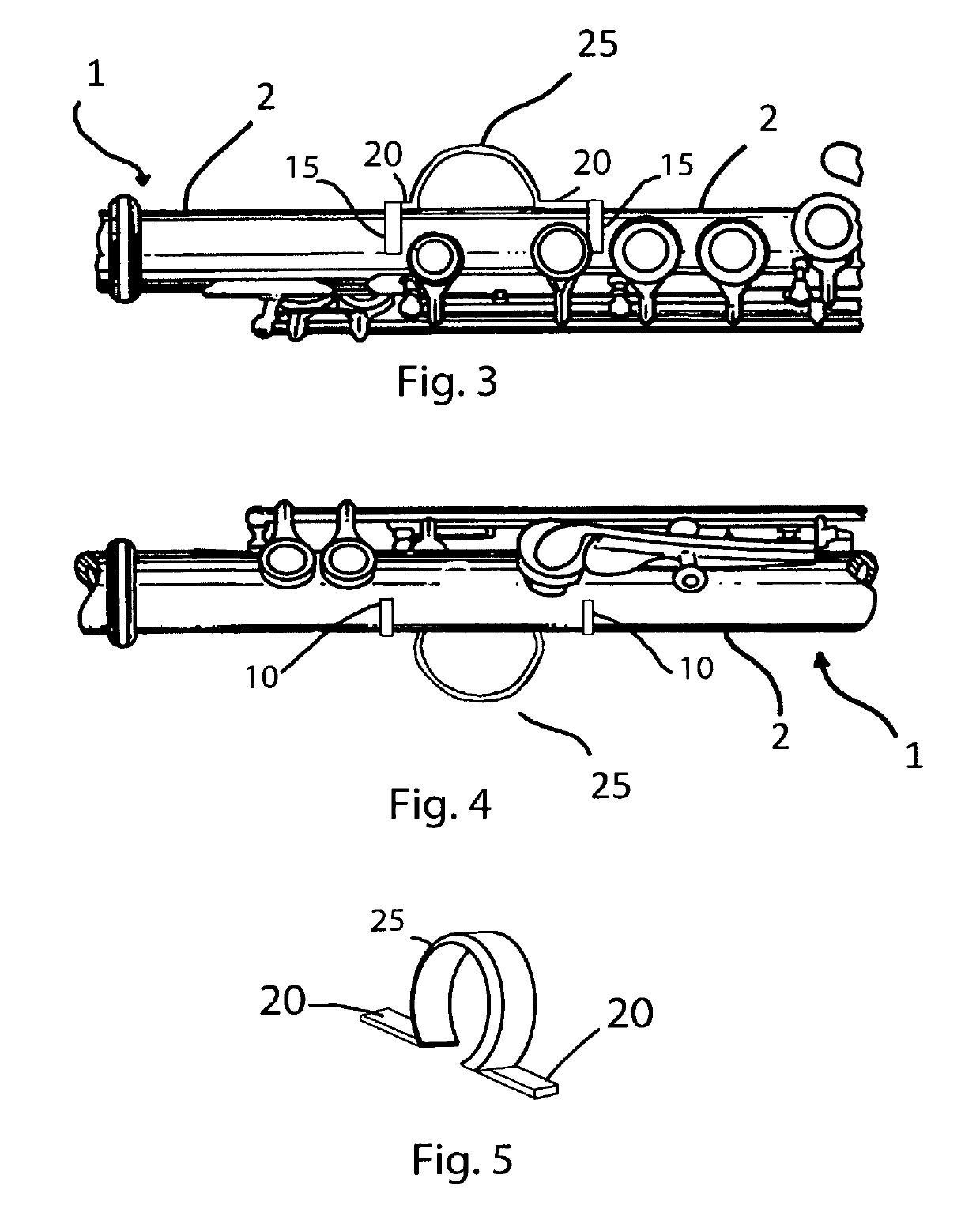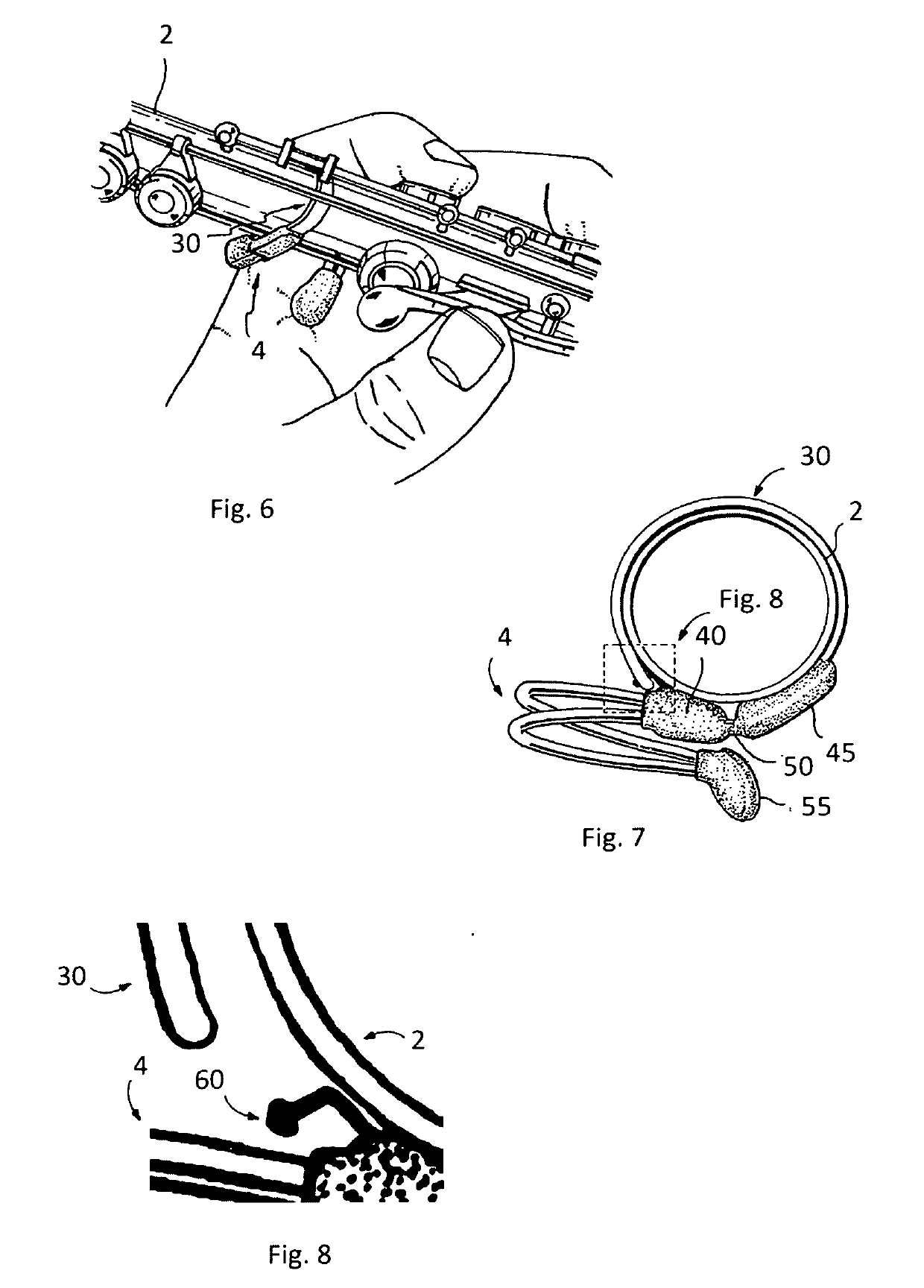Finger Connecting Flute Attachment
- Summary
- Abstract
- Description
- Claims
- Application Information
AI Technical Summary
Benefits of technology
Problems solved by technology
Method used
Image
Examples
Embodiment Construction
[0036]FIG. 1 is a side view of the left hand index finger flute-finger connector comprising a finger-retaining discontinuous ring, 25, attachment arms (upper only are shown), 15, and spacing bars, 20, connecting the parts together and determining where the fastening will take place with respect to the keys of a flute, and of such length as to permit the device's attachment to the flute without interfering with the action of its keys. This same embodiment is shown in FIG. 2, in environmental perspective view, which shows, in addition to the parts described before, the lower attachment arms, 10.
[0037]A left hand index flute-finger connector comprising a finger-retaining discontinuous ring, 25, is shown in FIG. 3 and FIG. 4, removably attached to the tubular body, 2, of the flute, 1, by its pairs of upper, 15 in FIG. 4, and lower, 10 in FIG. 5, attachment arms. The spacing of the attachment arms, 15 and 10, relative to the ring, 25, and the flute, 1, is controlled by the lengths of the...
PUM
 Login to View More
Login to View More Abstract
Description
Claims
Application Information
 Login to View More
Login to View More - R&D
- Intellectual Property
- Life Sciences
- Materials
- Tech Scout
- Unparalleled Data Quality
- Higher Quality Content
- 60% Fewer Hallucinations
Browse by: Latest US Patents, China's latest patents, Technical Efficacy Thesaurus, Application Domain, Technology Topic, Popular Technical Reports.
© 2025 PatSnap. All rights reserved.Legal|Privacy policy|Modern Slavery Act Transparency Statement|Sitemap|About US| Contact US: help@patsnap.com



